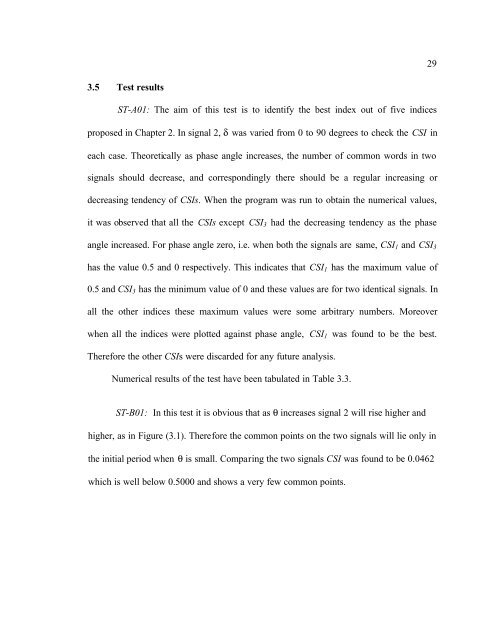symbolic dynamic models for highly varying power system loads
symbolic dynamic models for highly varying power system loads
symbolic dynamic models for highly varying power system loads
Create successful ePaper yourself
Turn your PDF publications into a flip-book with our unique Google optimized e-Paper software.
29<br />
3.5 Test results<br />
ST-A01: The aim of this test is to identify the best index out of five indices<br />
proposed in Chapter 2. In signal 2, δ was varied from 0 to 90 degrees to check the CSI in<br />
each case. Theoretically as phase angle increases, the number of common words in two<br />
signals should decrease, and correspondingly there should be a regular increasing or<br />
decreasing tendency of CSIs. When the program was run to obtain the numerical values,<br />
it was observed that all the CSIs except CSI 3 had the decreasing tendency as the phase<br />
angle increased. For phase angle zero, i.e. when both the signals are same, CSI 1 and CSI 3<br />
has the value 0.5 and 0 respectively. This indicates that CSI 1 has the maximum value of<br />
0.5 and CSI 3 has the minimum value of 0 and these values are <strong>for</strong> two identical signals. In<br />
all the other indices these maximum values were some arbitrary numbers. Moreover<br />
when all the indices were plotted against phase angle, CSI 1 was found to be the best.<br />
There<strong>for</strong>e the other CSIs were discarded <strong>for</strong> any future analysis.<br />
Numerical results of the test have been tabulated in Table 3.3.<br />
ST-B01: In this test it is obvious that as θ increases signal 2 will rise higher and<br />
higher, as in Figure (3.1). There<strong>for</strong>e the common points on the two signals will lie only in<br />
the initial period when θ is small. Comparing the two signals CSI was found to be 0.0462<br />
which is well below 0.5000 and shows a very few common points.
















